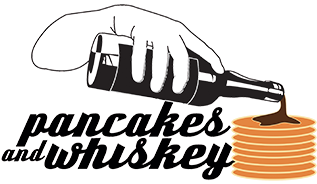So, you’ve probably noticed all the bottles on the shelf labeled “moonshine”. You might’ve even noticed me talking about moonshine simply being the term for illegally made whiskey. It’s time set the record straight (even my own!).
I recently had the pleasure of interviewing Billy Kaufman from Short Mountain Distillery, Tennessee’s sixth distillery. When he moved to Tennessee to become a farmer on an organic, sustainable farm, he also found something else in those backwoods: moonshiners. Not the ones on Discovery (though I guess those guys are real) – but true, recipe-handed-down moonshiners.
Billy’s fantasy (as he called it) was that the three ‘shiners he hired would collaborate and develop moonshine recipes for him to distill. Well, they collaborated: for all of ten minutes! Turns out they all use the same recipe. Which is good for getting stuff distilled, but not so great for Billy’s vision. But, if it works, why mess with it?
Before I tell you what his moonshine is made out of, we need a little education. All whiskey is made from a “mash bill” or recipe. Some mix of grains that get mashed and fermented. For instance, bourbon has to be 51% corn to earn the name bourbon (that’s the minimum, some are higher). I’ve talked before about the cuts when you’re stilling – heads and tails aren’t a good idea, hearts are what you want. But, for a good aged whiskey, you DO need some tails thrown in. The barrel aging takes care of the chemical side of things, so you end up with a flavorful whiskey, that started off as something slightly less tasty, if you just bottled it right then.
There are quite a few distillers that sell their unaged products: George Dickel, Jack, Jim – they all have a white dog. As with the aged stuff, some of the white dog is quite good. Some of it should be left in the kennel. Not all unaged whiskey is bourbon, either – there are several rye whiskies floating around, too.
Ok, so moving on. That explanation told you what unaged whiskey is. But what is moonshine? It seems that the one recipe that all three of the moonshiners at Short Mountain used is made primarily from sugar. Yep, you read that correctly. White sugar. Tell me: what would you rather carry out into the woods by the light of the moon? A big bag of sugar, or many bags of corn? Needs must when the devil drives, as they say. So while more corn in the mash might be preferable, in went the more easily transported sugar.
And guess what? It’s good! You might think that because it’s made mostly from sugar, that it’s sweet. Don’t forget, it’s still liquor! Short Mountain’s straight ‘shine is 105 proof – and probably the smoothest 105 anything I’ve ever had. So just because it’s made from sugar, doesn’t mean it tastes like sugar.
Moonshine is the last of the government’s unregulated categories. To be straight whiskey, you must age your whiskey at least two years. “Bottled in Bond” follows a bunch of rules. Even vodka is required to be “without distinctive character, aroma, taste or color”. But moonshine rules? Crickets. So depending on your marketing people, you might be calling your hooch “moonshine” but it’s really unaged whiskey, trying to cash in on its current popularity. Jam some fruit in it, and we’re off to the races.
I’m not saying that all the things that are called moonshine are bad. Like white dog, some are, some aren’t. Sadly, I started with ones that were on the bad side, so I naturally assumed that everything “moonshine” was harsh and undrinkable. But just like all whiskey shouldn’t be judged by that one bad night you had with one of the “J” boys, neither should all moonshine. Keep an open mind – try something new – I did, and found a new favorite! Cheers!
Article by: Jeanne Runkle





Google
Google
We like to honor quite a few other world-wide-web web pages on the internet, even when they arent linked to us, by linking to them. Beneath are some webpages really worth checking out.